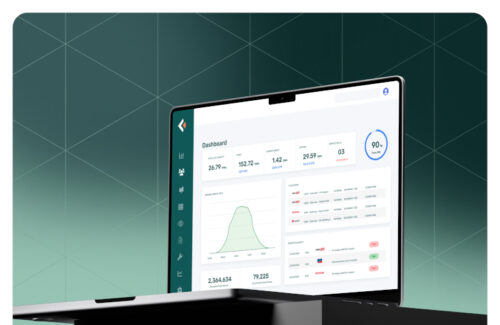The era of margin cushions is over. Tax credits are shrinking. Development headwinds are growing. Asset owners in C&I solar are finding that many “online” systems are underperforming. Uptime numbers may look fine, but the bottom line says otherwise.
As incentives fade, profitability hinges on performance. Optics matter too. If solar wants to shed its “intermittent” label, projects must deliver reliably when the sun shines.
But when we dig into the data, we find underperformance at alarming rates.
67% output from “operational” portfolios
 enSights analyzed over 10,000 C&I solar systems across the United States, Middle Eastand Europe, many with 95-99% availability guarantees. We saw systems consistently missing numbers, operating at just 90-95% uptime.
enSights analyzed over 10,000 C&I solar systems across the United States, Middle Eastand Europe, many with 95-99% availability guarantees. We saw systems consistently missing numbers, operating at just 90-95% uptime.
Across six C&I portfolios (3,000+ assets), the average energy shortfall was 23%. Effectively, these portfolios delivered only two-thirds of expected generation.
That gap translates into missed revenue. A 300-MWp portfolio (~800 systems) lost $2-6 million annually from 90-MW underperformance.
And that’s before considering the contractual exposure. Owners face PPA penalties, investor pressure, and financing consequences if performance falls short.
Meanwhile, many maintenance providers fail to meet their own contractual obligations. Even with 95-99% uptime on paper, performance gaps persist and owners are left holding the bag.
This isn’t just a technical problem. It’s a systemic breakdown in visibility, coordination and accountability. The question is why, and what can we do about it?
Top 3 barriers to solar performance
1. Alert fatigue and operational noise
C&I portfolios are built from a patchwork of OEMs, inverters, trackers and monitoring tools. A single asset might generate dozens of alerts, many of them duplicative or low-priority.
For a technician managing 100+ systems, this becomes chaos. Our analysis shows up to 34% of alerts are false positives, burying critical issues.
One real-world outage went unnoticed for three months.
Leading operators now use alert triage: root cause analysis, severity scoring and filtering to identify problems and what matters most.
2. Disconnected tools and dirty data
Most C&I teams use fragmented systems: one tool for monitoring, another for ticketing, others for billing, performance and reporting. As portfolios scale, manual reconciliation becomes a bottleneck.
Inverter data may update every 15 minutes and financials monthly. There’s often no single source of truth, and minor discrepancies take hours to resolve. Storage assets make this harder with more providers, dispatch complexity, and integration challenges.
The solution is integrated platforms with centralized data to unify performance, service and finance. Some owners report 90% less time spent on reporting with fewer billing errors and missed credits.
3. Functional silos and financial blind spots
Even when data is available, it lives in departmental silos. Finance tracks billing and Profit and Loss statements. Operations monitors system performance. Analysts study trends. But they rarely share a unified view or urgency.
That disconnect delays decisions. When issues arise, there’s no clear ownership or shared context for prioritization. Invoicing errors go unnoticed. Service level agreement (SLA) penalties accrue. And the portfolio quietly bleeds revenue.
The best operators now align data with financial impact. Linking technical issues to revenue losses sharpens prioritization and strengthens the case for investment.
Lessons from the field
From our work with developers and O&M providers, we’ve seen three trends:
- Automated diagnostics cut outage response time by 60–70% via alert filtering by financial impact and root cause.
- Consolidated dashboards build investor trust through real-time visibility and fewer reporting delays.
- Cross-functional tools let lean teams scale. One developer grew from 300 to 700+ assets with no headcount increase by cutting manual processes.
These reflect a new mindset: clean data, cross-team alignment and financial transparency.
Storage: Don’t repeat solar’s mistakes
As storage enters more portfolios, complexity and risk skyrocket. Fragmented systems and inconsistent dispatch are already creating the same blind spots that plagued early solar projects.
But teams are learning. They’re applying performance intelligence from the start: unified monitoring, real-time data, cyber-secure integration and holistic management of solar + storage.
By tackling integration, data quality, cyber risk, operations and standardization early, they’re building more scalable, resilient storage fleets.
Performance is the new incentive
Tax credits once softened the blow of inefficiencies. That cushion is gone. What’s left is raw performance and accountability.
If you’re at 90-95% uptime and only hitting 66-70% of expected output, you’re not just missing goals. You’re losing millions.
The smartest teams aren’t just asking, “What’s broken?” They’re asking, “Why? What’s the cost? And how do we fix it fast?”
When margins shrink and incentives fade, the best investment isn’t more assets. It’s making sure the ones you already own are delivering.
 Alon Mashkovich is the CEO and co-founder of enSights, with over 15 years of experience in energy consulting, renewables, and business operations. He’s passionate about helping companies digitize their energy strategies to drive performance, sustainability and long-term impact.
Alon Mashkovich is the CEO and co-founder of enSights, with over 15 years of experience in energy consulting, renewables, and business operations. He’s passionate about helping companies digitize their energy strategies to drive performance, sustainability and long-term impact.

